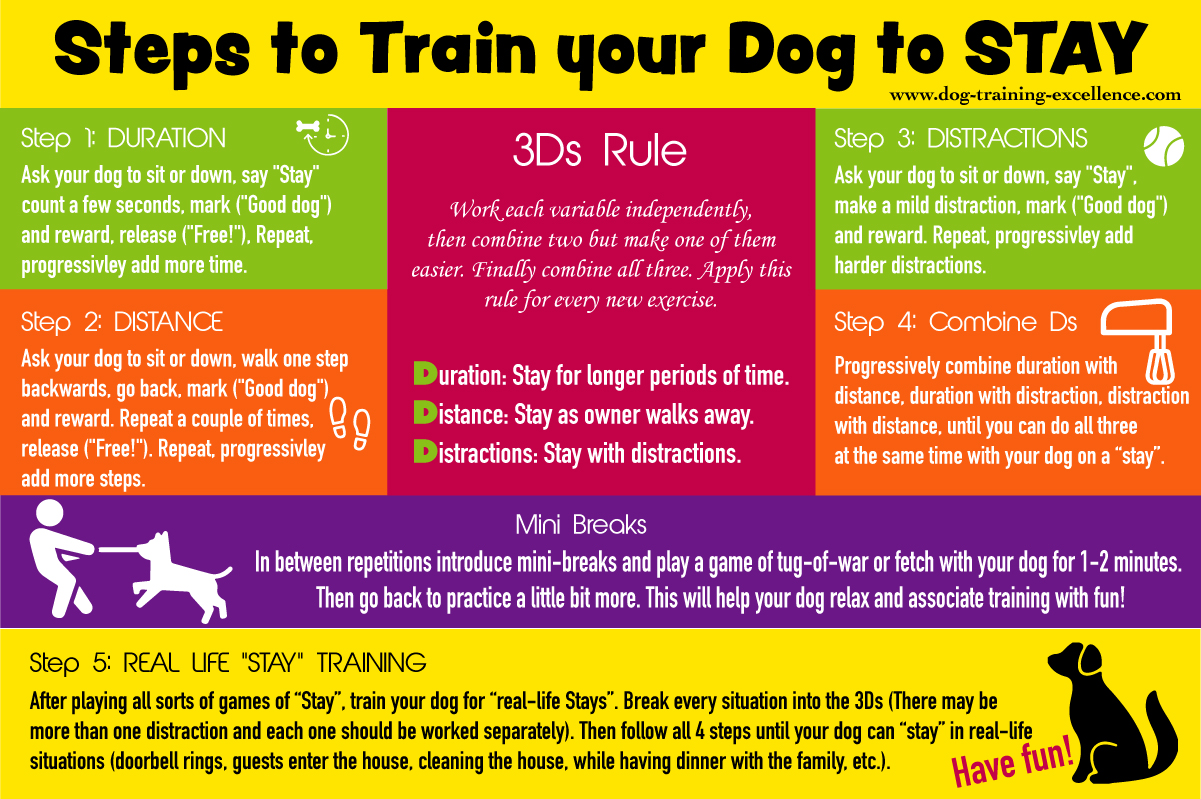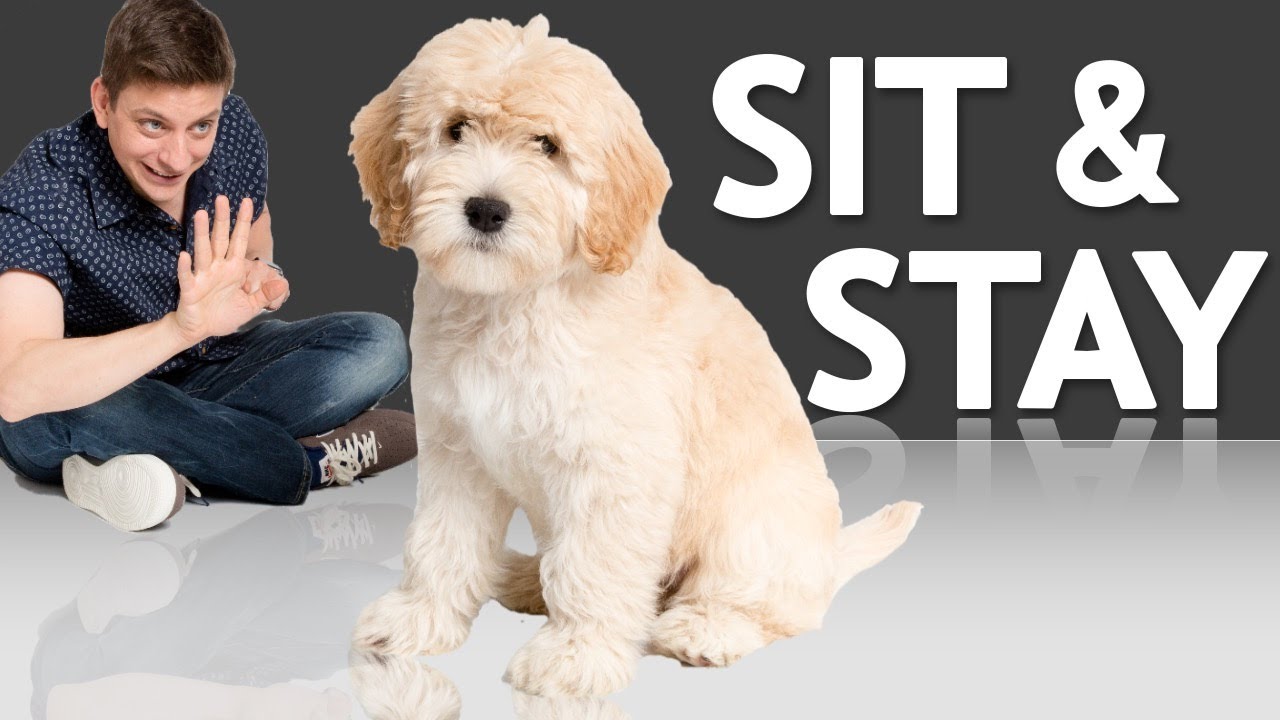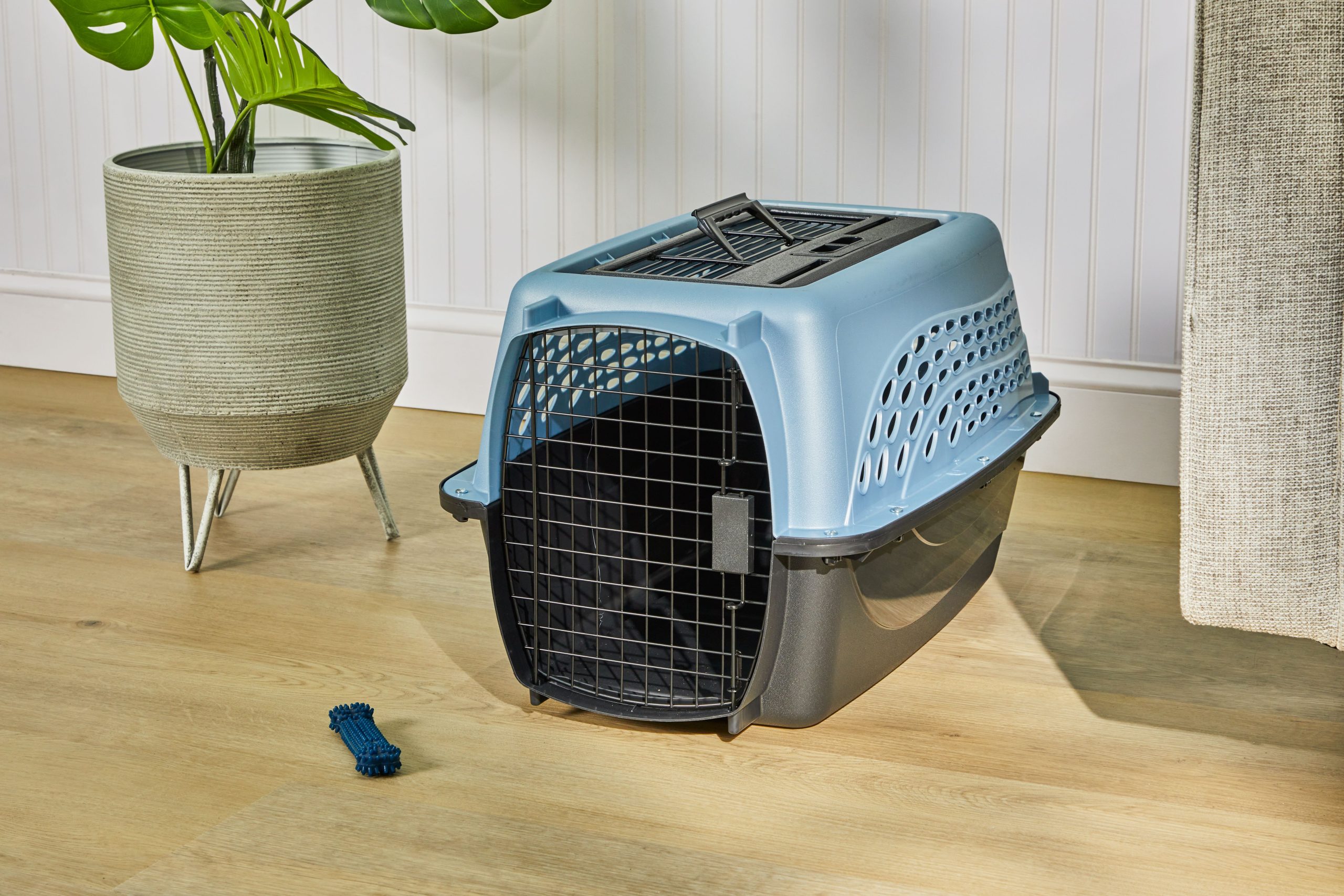How Do I Train My Dog to Stay: Pro Tips & Tricks

How Do I Train My Dog to Stay? Training your dog to stay is essential for a well-behaved pet. It helps keep your dog safe and teaches them self-control.
Many dog owners face challenges when teaching this important command. A reliable “stay” command can prevent your dog from running into danger, such as traffic or other animals. It also allows you to manage situations better, like when guests arrive or during meals.
To train your dog takes patience and consistency, but the rewards are worth it. With the right techniques, you can help your furry friend learn to stay in place. This guide will provide you with effective steps to train your dog to stay, making your life easier and your dog’s behaviour better.
Credit: www.dog-training-excellence.com
Introduction To Dog Training
Teaching your dog to stay is very important. This command helps keep your dog safe. It can stop them from running into danger. A well-trained dog is easier to manage.
Set realistic goals for your training. Start with short training sessions. A few minutes each day is enough. Be patient and kind. Use treats to reward good behaviour. This makes training fun for your dog.
Always practice in a quiet place first. Gradually add more distractions. This helps your dog learn to stay focused. Remember, every dog learns at their own pace.
Essential Training Supplies
Choosing the right treats is key for training. Use small and tasty treats. Dogs love soft treats. They are easy to eat quickly. This helps keep their focus. Avoid treats that are too big. They can slow down training.
Investing in a good training leash is also important. A strong leash helps you control your dog. Look for a comfortable handle. This makes it easy to hold. A six-foot leash is a good length. It gives your dog some freedom. Choose a leash that is durable. This will last a long time.
Understanding Your Dog’s Behavior
Dogs communicate with their bodies. Ears, tails, and eyes show their feelings. A wagging tail often means happiness. Flat ears might mean fear or submission. Understanding these signs helps you connect with your dog.
Body language is important. Watch your dog’s posture. A relaxed dog feels safe. A tense dog may be anxious. Look for signs of stress like yawning or licking lips.
Consistency is key in training. Use the same commands each time. This helps your dog learn better. Reward good behaviour often. This makes your dog want to listen to you. Training should be fun and positive.

How Do I Train My Dog to Stay
Step-by-step Guide to’stay”
Start by teaching your dog the ‘Stay’ command. Use a calm voice. Show your dog a treat. Hold it close to their nose. Say “stay” as you move your hand away. If they stay, give them the treat. If they move, gently guide them back.
Practice this often. Keep the sessions short and fun. Gradually move further away. Say “stay” again. Wait a few seconds before giving a treat. Increase the time you ask them to stay.
Be patient. Every dog learns at their own pace. Celebrate small wins. This makes learning fun for your dog.
Training Techniques For Success
Positive reinforcement is a great way to train your dog. This method rewards good behaviour. Use treats, praise, or toys as rewards. Dogs learn quickly when they feel happy.
Patience is very important. Training takes time. Repeat commands often. Always stay calm and encouraging. Dogs learn best in a positive environment.
Practice daily in short sessions. Keep them fun and engaging. This helps your dog understand what you want. Remember, every dog learns at their own pace.
Common Mistakes To Avoid
Using commands consistently is very important. Dogs need to learn what you mean. If you change commands, it confuses them.
Short training sessions are best. Long sessions can tire your dog out. This makes them less willing to learn. Keep sessions under 10 minutes. End on a positive note.
Take breaks between training. Let your dog rest and play. This helps them stay focused and happy.
Troubleshooting Training Challenges
Dogs can easily get distracted. This makes training hard. Here are some tips to help.
- Choose a quiet place for training sessions.
- Use high-value treats to keep their attention.
- Start with short sessions. Gradually increase the time.
- Practice around distractions slowly. Add one at a time.
- Stay calm and patient. Dogs sense your mood.
When your dog refuses to stay, try these steps:
- Check if they are tired or stressed.
- Use a leash if needed. This helps control them.
- Be consistent with commands.
- Reward them when they do well.

How Do I Train My Dog to Stay
Credit: petstek.com
Advanced Training And Beyond
Using the command “Stay” can be part of daily life. Start with simple tasks. Ask your dog to stay while you do chores. This helps them learn patience.
Use the command during meals. Ask your dog to stay before they eat. Reward them with treats. This reinforces good behaviour.
Practice during walks too. Have your dog stay while you cross the street. This keeps them safe and focused on you.
After your dog learns “stay,” move to new places. Try this at parks or friends’ homes. It helps them stay calm in different settings.
Keep practicing regularly. Short, fun sessions work best. This keeps your dog happy and engaged.
Maintaining Training Long-term
Regular practice is very important for dog training. Set aside time each day for short training sessions. Keep these sessions fun and positive. Use treats and praise to reward your dog. This helps them learn better.
Involving the whole family makes training easier. Everyone should use the same commands. This helps your dog understand what to do. Make sure all family members know the training plan. Consistency is key to success.
Conclusion: The Lifelong Benefits of’stay”
To train your dog to stay is important. It can keep them safe. A well-trained dog can avoid dangerous situations. This can protect them from traffic or wild animals.
Teaching stay also helps build trust. Dogs feel secure when they know what to do. This strengthens the bond between you and your dog.
Regular training sessions create a strong connection. Dogs learn to listen to you. This leads to a happy and healthy relationship.
Safety and bonding go hand in hand. A dog that obeys commands is less likely to get hurt. You both enjoy more fun times together.

How Do I Train My Dog to Stay
Credit: m.youtube.com
Frequently Asked Questions
How Can I Teach My Dog To Stay?
To teach your dog to stay, start with basic commands. Use a leash for control and reward your dog with treats. Begin with short distances, gradually increasing the space between you and your dog. Consistent practice will help reinforce the command and build your dog’s confidence.
What Are The Best Treats For Training My Dog?
The best treats for training are small, soft, and tasty. Choose high-value treats that your dog loves. This can include bits of chicken, cheese, or special dog treats. Ensure the treats are easy to chew and digest, so your dog stays focused during training sessions.
How Long Should I Train My Dog Each Day?
Aim for 10 to 15 minutes of training daily. Short sessions keep your dog engaged and prevent boredom. Frequent, brief training periods are more effective than longer sessions. Consistency is key, so practice daily to reinforce commands and improve your dog’s behaviour over time.
Can Older Dogs Learn To Stay As Well?
Yes, older dogs can learn to stay effectively. While training may take longer, patience and consistency are essential. Use positive reinforcement to motivate your dog. Tailor your training sessions to your dog’s ability, and always celebrate their progress, no matter how small.
Conclusion
Training your dog to stay takes patience and practice. Use clear commands and positive rewards. Short training sessions work best. Always be consistent with your signals. Celebrate small successes to keep your dog motivated. This builds trust and strengthens your bond.
With time, your dog will learn to stay reliably. Enjoy the process. A well-trained dog makes for a happy home. Stick with it, and you will see great results. Remember, patience is key in dog training. Your efforts will pay off in the end.







[…] Dogs bark for many reasons. Barking is a part of their communication. They bark to say they are happy, scared, or alert. […]
[…] patience and practice, you can train your dog to stay in a specific spot. Understanding the right techniques can make this process […]